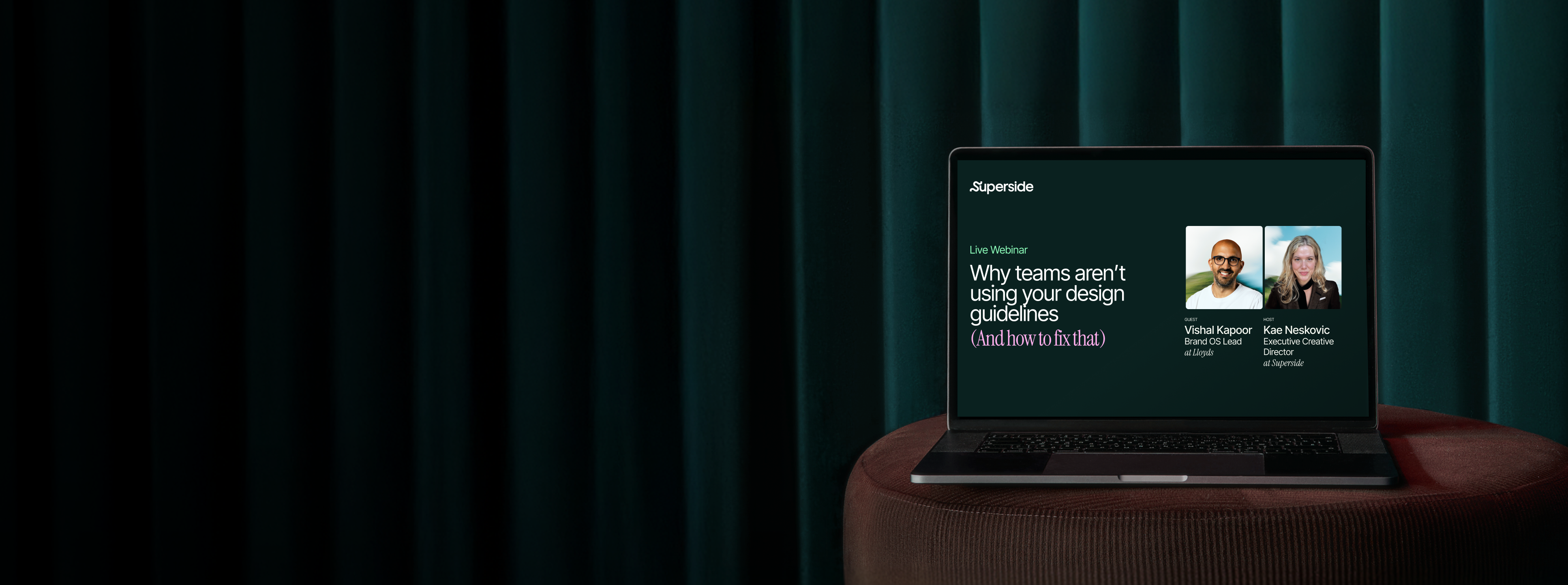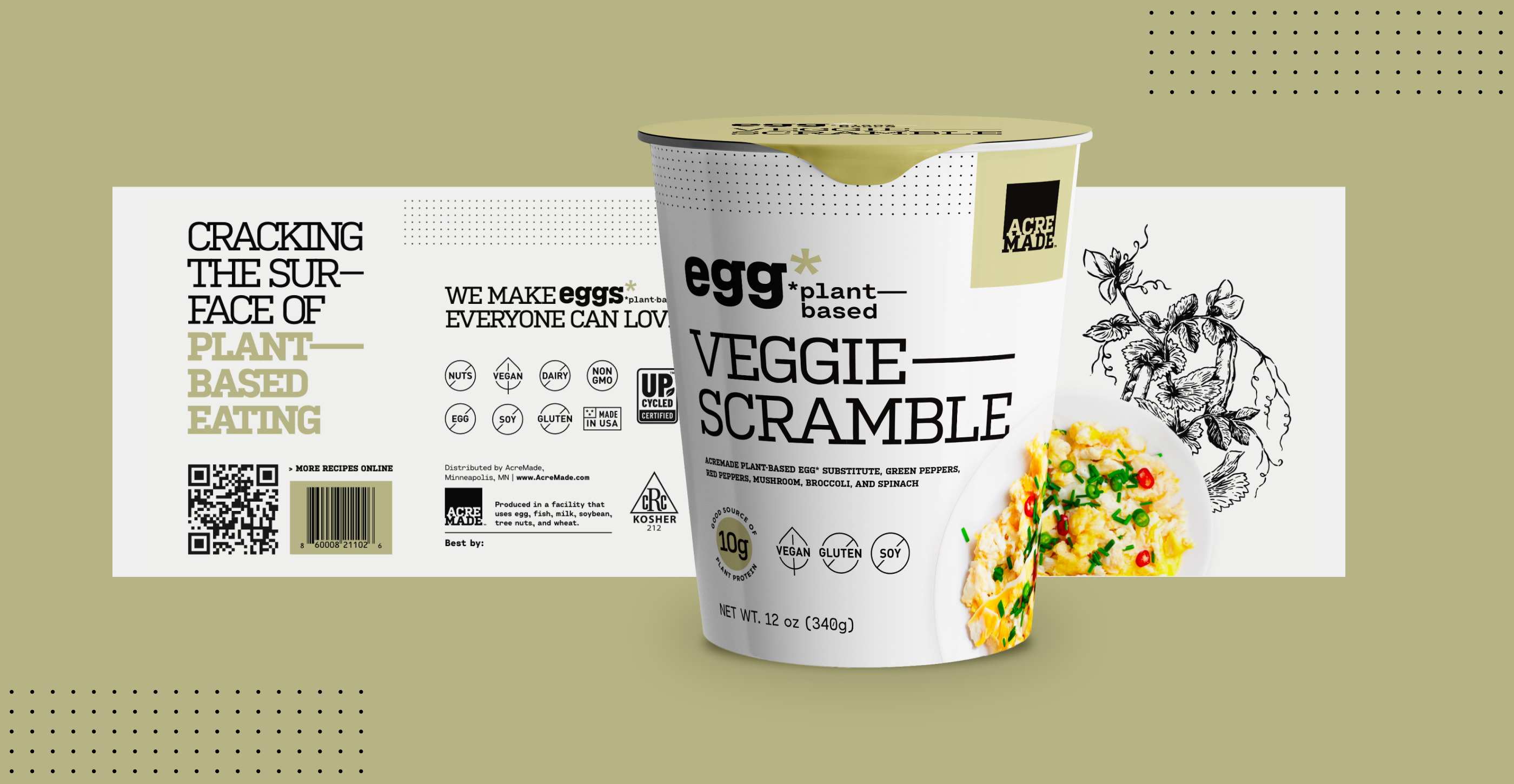What Is Color Theory, and How Do You Use It?

Red means hot, blue means cold. Green means go, yellow suggests caution, and red says “stop”. Colors mean something to us, and we’re at our best when we use them accordingly.
They’re usually consistent, too. Take the use of red for example. In both cases above, the trait it notes is “urgency”. Don’t stick your hand under the hot tap; stop at the light or face consequences greater than a burnt finger. Red is provocative and activating, which is why you’ll see it often in marketing materials.
What’s more, colors work with and against one another to great visual effect. Some wrap around one another in perfect harmony, others bounce off each other in ways that produce a quiet “ugh” in the human brain. Some combinations are just the right amount of “wrong” to be bold, others are so “right” they’ve been done to death.
If you’re a designer (or a marketer with a creative flair), this is where you should be keying in: Your use of color influences how your audience engages with your brand. Here, you’ll learn what color theory is, and how you can use it to make design/marketing materials that hit home with prospects.
What you’ll learn
What is Color Theory in Design?
How Color Theory Affects Marketing
How to Use Color Theory in Design
How Pro Designers Use Color Theory
What is Color Theory?
Color theory is the playbook for communicating with your audience through color. It’s based on our collective understanding of how we perceive color, and where colors fit into human psychology, history, culture and evolution. It also speaks to the relationships between different colors, and how they can be combined and applied to create harmony or chaos—both of which have their time and place in visual mediums. Color theory, you may be gleaning, is everything color.
It’s been proposed that our understanding of color is rooted in our origins. When we lived in forest caves and scavenged for our meals, color was the thing you’d remember to tell you which berries and plants were safe to eat, and which made Ogg sick last time. It’s also an alarm system, as Ogg’s scavenges would’ve been cut short when a yellow mane poked out of the green brush.
What is Color Theory in Design?
No one cares about color theory more than designers. It goes well beyond knowing which colors are pretty, or which ones “make it pop”. It’s about applying colors in combinations that serve the material’s message and/or brand in question. When used for marketing purposes, it’s also about knowing which colors carry which associations, and using those associations to your advantage when generating high-performing creative assets.
The basics of color theory
At the center of color theory is the color wheel—an organization of all colors around a circle, illustrating the relationships between them. It helps designers create color schemes that appeal to (or at least, don’t offend) human eyes, and is broken up into primary, secondary and tertiary colors.
Primary colors cannot be formed by any combination of other colors in most paints. In design, the three primary colors are red, yellow and blue. In physics, however, they’re red, green and blue.
Secondary colors are made with an equal mixture of two primary colors. Red and blue make purple, red and yellow make orange, and yellow and blue make green.
Tertiary colors are made by mixing a primary color with an adjacent secondary color. They have fancier names like “chartreuse”, but saying “yellow-green” will suffice.
Color schemes are categorized based on color harmony and color relativity. Color harmonies are collectively-agreed-upon combinations of hues that create a satisfying color balance—read on for some examples. Color relativity is how color appears compared to the colors or visual items surrounding it. Think of how a warm color like orange can give a nearby gray a cooler, almost blue-ish tone.
A color’s placement on the wheel can help a designer determine which colors work well together. The color on the opposite side of the wheel from any individual color is called its “complement”. “Analogous” or “adjacent” colors are colors found beside one another on the wheel.
Examples of color schemes
Most colors are flexible in their applications, but can still be categorized by their overarching uses. Color theory doesn’t expressly speak to emotional associations of individual colors, though. It’s primarily used by designers to suggest complementary or bold color combinations.Here are a few examples of color combinations that designers make regular use of:
- Achromatic: A presentation of neutral colors derived from black and white.
- Analogous: A combination of three adjacent primary, secondary, or tertiary colors on the color wheel (ex. yellow, light green and dark green).
- Complementary: A color scheme one built from colors directly across from each other on the color wheel (ex. blue and orange).
- Color Diad: A combination using two colors that are two sections apart from one another on the color wheel (ex. green and purple).
- Color Triad: A combination of three colors that are an equal distance from one another on the color wheel (ex. yellow, blue and red).
- Color Tetrad (or “square”): A combination of four colors that are an equal distance from one another on the color wheel (ex. green, violet, red and yellow).
- Monochromatic: A color scheme based on one color tint. It exclusively uses shades of a single hue, made by changing the saturation and brightness of the base color.
- Split Complementary: A color scheme made by choosing one color on the wheel (violet, for example), and using the color on each side of its complement (in violet’s case, the light orange and light green on either side of dark green).
How to Use Color Theory in Design
A creator that knows how to apply color theory to their designs can say a lot with a little. They can use it to communicate a brand’s essence, deliver a poignant message or make a work of art more affecting. Often enough, it’s all three.
Much of the work in applying color theory to design comes through familiarity with the principles. They’re unchanging, so once you’ve learned them, they’re there to stay. Here are a few tips on how you can use color theory in your designs, whatever your goal.
1. Determine the goal of your design
What do you want to happen after you’ve wrapped up your project? Are you doing it for your own satisfaction, or are there marketing/client goals to consider? If it’s the former, you’re probably aiming for creative fulfillment, and really have only yourself to consider. If you want to draw a green rabbit, draw a green rabbit.
If the project has other peoples’ goals attached to it, find out what those goals are. Are you designing marketing creative? If so, there may be a color palette, likely “company colors” to adhere to. Talk with your stakeholders about what expectations they have for their branding and creative.
2. Define an audience for your work
If it’s just you, there’s not much consideration to be given beyond your own taste. Maybe the rabbit could be in a space helmet.
For goal-oriented creative, your stakeholders should know with pinpoint accuracy who they’re trying to reach. Working within any branding expectations, knowing who you’re talking to can determine what colors/color schemes you deploy. A lifestyle brand targeting 18-24 year olds is unlikely to paint from the same palette as a company selling life insurance to 40-60 year olds.
3. Decide on a “takeaway” from the design
This is the big one. How do you want someone to feel when they see your work? Maybe your green space rabbit hints at childish wonder, as amusing as it is nonsensical.
In marketing, you’ll get a hint at the takeaway through knowing the creative’s audience and its goal. Color is unlikely to do all the legwork in this area, but the right colors can accentuate an asset’s message by supporting its tone.
How Color Theory Affects Marketing
Knowing which colors can generate which associations is part of how we get strong creative assets. What’s more, it’s important to know which associations/colors will resonate with which audiences. If the tone of an online ad is one of urgency (say, a digital security provider), the careful use of red may serve you well. However, it may be a nightmare for a travel agency, who presumably want viewers to associate the brand with a sense of elation and ease.
Even more to that, the color needs of any piece of marketing content may change slightly depending on the message of the specific piece of content: Perhaps your laid-back travel agency needs to advertise a limited time offer, or your super-serious digital security provider is building a case study showcasing happy customers.
Marketing materials should match brand personality
A good marketer vouches for the use of colors that support a brand’s personality, rather than appealing solely to stereotypes about “good” and “bad” colors. While red may seem an obvious choice for generating user action, an accounting firm that banks on reliability and attention to detail probably shouldn’t plaster its homepage with exciting crimson. It’s not on brand.
Using colors that fit with your brand’s personality is critical to building a consistent and cohesive brand experience. Ultimately, the right colors can sway purchase intent, or help move a prospect along to conversion. Research suggests up to 90% of snap judgments consumers make about products are based on color.
How Professionals Use Color Theory
Though we’ve covered the basics of color theory, this is just a starting point in understanding color. The people who know color best—the people who can twist and bend it to their will, molding simple shades and tints into stunning representations of brands and concepts—those people are typically designers and visual artists.
And the more a designer gets around, sharpening their craft in different styles and industries, the more adept they become at using color theory to deliver high-quality creative. There are few designers as versed using color to drive marketing goals as those on dedicated design teams. The value of know-how and creativity of a purpose-built team of brand experts can’t be overstated.
David is a Senior Content Marketer at Superside. A former journalist with bylines too numerous to enumerate, he brings his love of storytelling and semantics to the marketing world. Recognizing the sizable gaps in the creative-as-a-service (CaaS) sector, he jumped at the chance to fill the creative void for ambitious brands. In his off hours, he enjoys loud music, making vegan meals and being made fun of for making vegan meals. He’ll gladly talk to you about any of the above on LinkedIn.
You may also like these

7 Ways Lloyds Built a Design System Teams Actually Want to Use
Watch the full webinar:Why Teams Aren’t Using Your Design Guidelines (And How to Fix That) Meet Vishal Kapoor: Brand Design Lead at Lloyds
10 creative services examples from top brands in 2025
Creative service companies help brands conceptualize, design, produce and deliver visual and marketing assets that drive awareness, engagement and growth. Increasingly, these service providers also step in to help in-house teams at enterprise-level organizations meet the demands of their always-on, omni-channel marketing cycles.The reality is that the constant push to make new campaigns live puts teams under immense pressure. As a result, outsourced creative work has become a lifesaver for brands that want to keep up with the speed and scale the market now demands.Superside, for example, offers subscription-based access to a world-class team of creatives to help our customers deliver design, video, motion and more. We also stretch into more technical tasks, such as performance marketing, to close the loop on campaigns.At the enterprise level, companies like Superside become the operational engine that keeps quality high and assets consistent, while campaigns effortlessly scale across channels and markets.Why creative services are essential for enterprise growth
19 best packaging design examples to fuel your marketing in 2025
While it’s true that you can’t judge a book by its cover, the opposite holds true in the world of product packaging.Here, it’s all about the presentation. In fact, 72% of U.S. consumers report that packaging design influences their purchasing decisions, and 67% place value on the materials used.Also, with the global packaging market projected to expand from $1,080.13 billion in 2024 to $1,452.86 billion by 2032, it’s essential to ensure your brand stands out in online stores and on shop shelves.Superside can help. This article begins with essential due diligence: We address the challenge of how to select suitable product packaging and provide a guide to help you evaluate your options. Then, we showcase 19 effective packaging design examples and examine their success.What makes packaging design so important for my brand?








